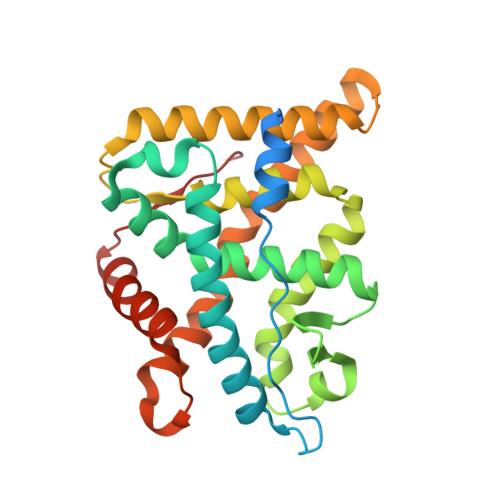Discovery of Indazole Ethers as Novel, Potent, Non-Steroidal Glucocorticoid Receptor Modulators.
Hemmerling, M., Edman, K., Lepisto, M., Eriksson, A., Ivanova, S., Dahmen, J., Rehwinkel, H., Berger, M., Hendrickx, R., Dearman, M., Jensen, T.J., Wissler, L., Hansson, T.(2017) Bioorg Med Chem Lett 26: 5741
- PubMed: 27810243
- DOI: https://doi.org/10.1016/j.bmcl.2016.10.052
- Primary Citation of Related Structures:
5G5W - PubMed Abstract:
A structure-based design approach led to the identification of a novel class of indazole ether based, non-steroidal glucocorticoid receptor (GR) modulators. Several examples were identified that displayed cell potency in the picomolar range, inhibiting LPS-induced TNF-α release by primary peripheral blood mononuclear cells (PBMCs). Additionally, an improved steroid hormone receptor binding selectivity profile, compared to classical steroidal GR agonists, was demonstrated. The indazole ether core tolerated a broad range of substituents allowing for modulation of the physiochemical parameters. A small sub-set of indazole ethers, with pharmacokinetic properties suitable for oral administration, was investigated in a rat antigen-induced joint inflammation model and demonstrated excellent anti-inflammatory efficacy.
Organizational Affiliation:
Respiratory, Inflammation & Autoimmunity, Innovative Medicines and Early Development Biotech Unit, AstraZeneca, Pepparedsleden 1, Mölndal 43183, Sweden. Electronic address: martin.hemmerling@astrazeneca.com.

















